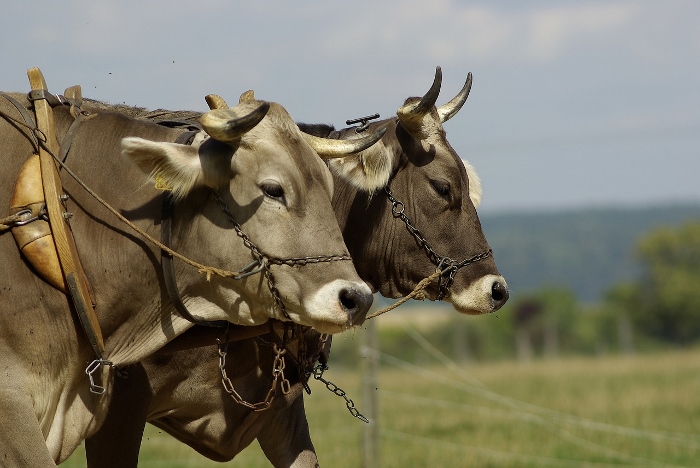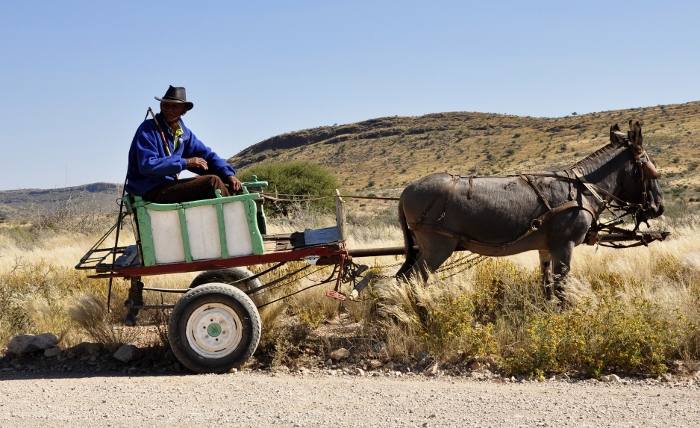Using animal traction on plots holds many obvious advantages for the smallholder. The benefits of using cattle, donkeys or horses in this way are economic and environmental. Draught animals are more cost effective to run than tractors, particularly for those of us who only use our tractors for a limited number of hours a year.
Buying a tractor is costly, even if one gets a second-hand machine. Some smallholders hire a tractor, but then they are not always able to do so when they actually need it.
Animal traction refers to the use of animals to carry out a wide variety of tasks on our plots, including:
- ploughing, harrowing, planting, ridging, weeding, mowing and harvesting,
- pulling carts and loads as well as carrying loads,
- driving water-pumps and pulling water from wells,
- carrying bricks, earth moving,
- mixing materials, providing power for threshing machines and grain mills.
Using an animal for ploughing etc means less impact on the soil. Tractors can cause compaction of the soil. Animals however actually contribute to the improvement of the soil through their manure. The manure can also be used to make compost tea. To read how to do this click here.
Tractors also contribute to air pollution.
Another option
On the other hand, some small scale farmers actually use both tractors and animal traction in a complimentary way. The tractors are used for the heavy work that would normally take a long time with draught animals, while the animals are used for activities which they can complete in a relatively short time at a considerably reduce operating cost.
You might also find that you have greater access to markets if you are able to transport your produce using animal drawn carts.
You can also generate some income by hiring out your cart.

Animals kept for draught purposes can be easily trained if the correct procedures are followed. Animals to be trained should be properly selected and should not be younger than two years.
Challenges
There are some challenges when it comes to using draught animals though. Not many people know how go about using animals for these purposes and there is a danger that the traditional knowledge is being lost.
There is a lack of training in animal traction skills, both of potential agriculturalists and extension officers and very little research seems to be taking place.
It is not always easy to find the right harnesses and other necessary tack and equipment.
There is also the perception, particularly amongst young people, that the use of animal traction is old fashioned and backward, a perception that needs to be overcome in order for the benefits to be recognised.
Smallholders need to have sufficient grazing for a draught animal or must be prepared to buy in fodder and concentrates or plant feed crops.
Animals should be chosen according to the type of work to be performed, the local environment, socio-economic conditions and the availability of local animals. Indigenous breeds tend to be well adapted to the local climate, feed availability, diseases and to traditional management systems.

